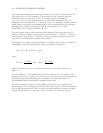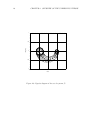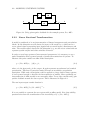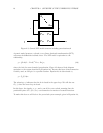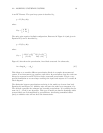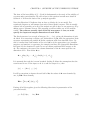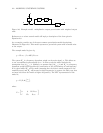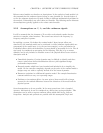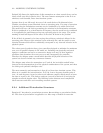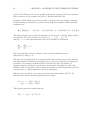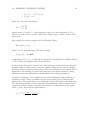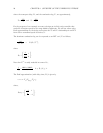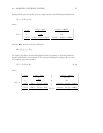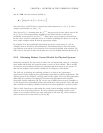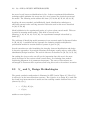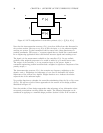2.2. MODELING UNCERTAIN SYSTEMS 23
Packard [19] discuss the implications of this assumption on robust control theory and we
briefly touch upon this in Section 2.4.6. The most common assumption is that ∆ is an
unknown, norm-bounded, linear time-invariant system.
Systems often do not fall neatly into one of the usual choices of ∆ discussed above.
Consider a nonlinear system linearized about an operating point. If a range of operation
is desired then the linearization constants can be considered to lie within an interval.
The model will have a ∆ block representing the variation in the linearization constants.
If this is considered to be a fixed function of frequency then the model can be considered
to be applicable for small changes about any operating point in the range. The precise
meaning of small will depend on the effect of the other ∆ blocks in the problem.
If the ∆ block is assumed to be time-varying then arbitrary variation is allowed in the
operating point. However this variation is now arbitrarily fast, and the model set now
contains elements which will not realistically correspond to any observed behavior in the
physical system.
The robust control synthesis theory gives controllers designed to minimize the maximum
error over all possible elements in the model set. Including non-physically motivated
signals or conditions can lead to a conservative design as it may be these signals or
conditions that determine the worst case error and consequently the controller.
Therefore the designer wants a model which describes all physical behaviors of the
system but does not include any extraneous elements.
The designer must select the assumptions on P and ∆. An inevitable tradeoff arises
between the ideal assumptions given the physical considerations of the system, and those
for which good synthesis techniques exist.
The most commonly used assumption is that ∆ is a linear time invariant system. This
allows us to consider the interconnection, F
u
(P,∆), from a frequency domain point of
view. At each frequency ∆ can be taken as an unknown complex valued matrix of norm
less than or equal to one. This leads to analyses (covered in Section 2.4) involving the
complex structured singular value. The following section discusses more complicated
block structures and their use in modeling uncertain systems.
2.2.4 Additional Perturbation Structures
Equation 2.7 introduced a perturbation structure, ∆ containing m perturbation blocks,
∆
i
. This form of perturbation is applicable to a wide range of models for uncertain



